-
 Bitcoin
Bitcoin $87,408.7072
0.16% -
 Ethereum
Ethereum $2,026.5042
-1.21% -
 Tether USDt
Tether USDt $1.0001
-0.03% -
 XRP
XRP $2.3700
-3.12% -
 BNB
BNB $627.5183
-0.42% -
 Solana
Solana $139.0115
-2.11% -
 USDC
USDC $0.9999
-0.03% -
 Dogecoin
Dogecoin $0.1972
3.30% -
 Cardano
Cardano $0.7388
-0.74% -
 TRON
TRON $0.2324
1.44% -
 Chainlink
Chainlink $15.6159
0.92% -
 Toncoin
Toncoin $3.7612
3.98% -
 Avalanche
Avalanche $22.0480
-2.36% -
 UNUS SED LEO
UNUS SED LEO $9.7762
0.10% -
 Stellar
Stellar $0.2923
-1.43% -
 Shiba Inu
Shiba Inu $0.0...01443
-0.97% -
 Sui
Sui $2.6842
8.25% -
 Hedera
Hedera $0.1952
0.33% -
 Polkadot
Polkadot $4.7132
2.20% -
 Litecoin
Litecoin $93.8649
-0.28% -
 Bitcoin Cash
Bitcoin Cash $338.4882
1.83% -
 MANTRA
MANTRA $6.6378
-0.52% -
 Bitget Token
Bitget Token $5.0697
1.57% -
 Pi
Pi $0.8397
-0.01% -
 Dai
Dai $1.0001
0.00% -
 Ethena USDe
Ethena USDe $0.9993
-0.02% -
 Hyperliquid
Hyperliquid $14.4248
-7.35% -
 Uniswap
Uniswap $6.8068
-1.70% -
 Monero
Monero $223.5153
-0.13% -
 Aptos
Aptos $6.0601
3.20%
How to confirm that the Ethereum wallet transfer has been successful?
Confirm successful Ethereum transfers by checking your wallet's transaction history for "Confirmed" status and using a block explorer (like Etherscan) with your transaction hash to verify blockchain inclusion and sufficient confirmations.
Mar 23, 2025 at 02:07 am
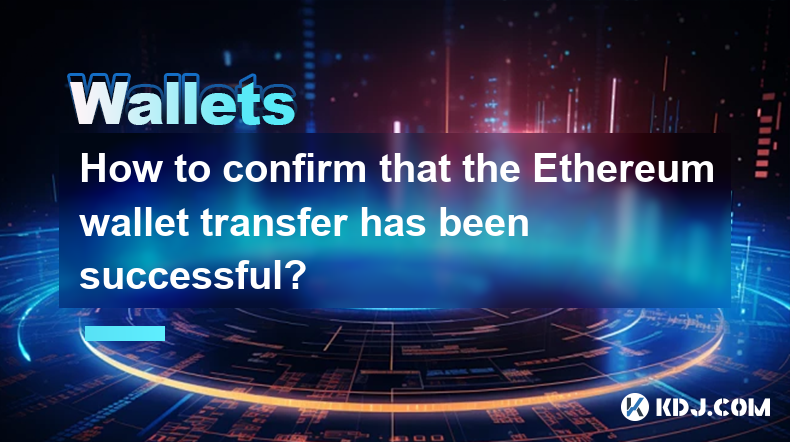
How to Confirm That the Ethereum Wallet Transfer Has Been Successful?
Transferring Ethereum (ETH) or ERC-20 tokens can sometimes leave users uncertain about the transaction's success. Several methods exist to verify a successful transfer, each offering varying levels of certainty and speed. Understanding these methods is crucial for managing your cryptocurrency assets effectively.
First, let's examine the transaction within your sending wallet. Most Ethereum wallets provide a transaction history. After initiating a transfer, locate the transaction in this history. Look for a status indicator. Many wallets display "Confirmed," "Completed," or similar labels once the transaction is processed on the Ethereum blockchain. However, the time this takes varies.
Next, consider the transaction details themselves. Each transaction has a unique ID (transaction hash). This alphanumeric string is crucial for verification. You can usually find this in your wallet's transaction history. This hash acts as a fingerprint, uniquely identifying your transaction on the Ethereum blockchain.
Using block explorers is a reliable method to independently verify your transaction. Popular explorers like Etherscan or Blockscout allow you to input your transaction hash. After entering the hash, the explorer will display comprehensive details about the transaction, including its status, the amount transferred, the sender and recipient addresses, and the gas fees paid. A confirmed transaction will show a clear status indication.
The status shown on a block explorer is usually the most reliable confirmation of a successful transfer. A "confirmed" status indicates the transaction has been added to a block and is permanently recorded on the Ethereum blockchain. The number of confirmations required for complete certainty varies, but generally, several confirmations provide strong assurance. However, even with confirmations, there is a tiny chance of reversal in extremely rare circumstances like a 51% attack, though this is highly improbable.
If you're using a hardware wallet, the confirmation process is generally similar. Check your wallet's transaction history for the transaction status. The status might take a little longer to update on a hardware wallet compared to a software wallet. Use the transaction hash to verify on a block explorer. The principles remain the same, regardless of the wallet type.
Sometimes, delays occur. Network congestion on the Ethereum blockchain can lead to slower transaction processing. If your transaction is pending for an extended period, it's crucial to remain patient and check the status regularly using a block explorer. Do not initiate another transfer with the same funds before the pending transaction is either confirmed or fails.
Understanding Gas Fees and Their Impact on Confirmation
Gas fees are essential for Ethereum transactions. They compensate miners for processing your transaction. Insufficient gas can result in a failed transaction. If your transaction failed due to insufficient gas, the funds will be returned to your wallet. Check your wallet's transaction history for the status, or check your block explorer for details of why the transaction failed.
Dealing with Unsuccessful Transfers
If your transaction shows a failed status on the block explorer, examine the reason for failure. Common causes include insufficient gas or an invalid recipient address. Review the transaction details carefully, and if necessary, contact your wallet provider's support. If you sent the funds to an incorrect address, recovery might be impossible, depending on the receiving wallet and its settings.
Security Measures and Best Practices
Always double-check the recipient address before confirming any Ethereum transfer. A simple typo can lead to irreversible loss of funds. Use reputable wallets and exchanges, and keep your private keys secure. Regularly back up your wallet to prevent data loss.
Frequently Asked Questions
Q: How long does it typically take for an Ethereum transaction to be confirmed?
A: Confirmation times vary depending on network congestion. It can range from a few seconds to several minutes or even longer during periods of high network activity. Check your block explorer for real-time status updates.
Q: What does "pending" mean in my wallet's transaction history?
A: "Pending" indicates the transaction is still being processed by the Ethereum network and hasn't been added to a block yet. It's essential to wait for confirmation on a block explorer.
Q: My transaction shows as "failed." What should I do?
A: Examine the failure reason on a block explorer. Common causes include insufficient gas or an incorrect recipient address. If the issue is insufficient gas, the funds should be returned to your wallet. If the issue is an incorrect address, recovery is often not possible.
Q: How many confirmations are generally considered sufficient?
A: While a single confirmation is often enough for many purposes, waiting for several confirmations (e.g., 6-12) provides stronger assurance against potential network issues or extremely rare blockchain reversions.
Q: What if I sent my ETH to the wrong address?
A: Unfortunately, recovering funds sent to the wrong address is very difficult, often impossible. Always double-check the recipient address before confirming any transaction.
Q: Can I cancel a pending Ethereum transaction?
A: No, you cannot directly cancel a pending transaction once it's been broadcast to the network. You have to wait for it to be either confirmed or fail.
Q: What is a transaction hash, and why is it important?
A: A transaction hash is a unique identifier for each Ethereum transaction. It allows you to track the transaction's progress on a block explorer and verify its status independently.
Q: What are block explorers, and how do they help?
A: Block explorers are online tools that provide detailed information about transactions on the Ethereum blockchain. You can use your transaction hash to view the transaction's status, details, and history.
Disclaimer:info@kdj.com
The information provided is not trading advice. kdj.com does not assume any responsibility for any investments made based on the information provided in this article. Cryptocurrencies are highly volatile and it is highly recommended that you invest with caution after thorough research!
If you believe that the content used on this website infringes your copyright, please contact us immediately (info@kdj.com) and we will delete it promptly.
- OM (Mantra) Price Prediction: Will the Correction Continue or Will the RWA Token Rebound?
- 2025-03-27 12:55:12
- Hyperliquid, a Decentralized Trading Platform Specializing in Perpetual Futures Contracts, Experienced a Crisis
- 2025-03-27 12:55:12
- Pi Network Price Has Continued to Decline and Traded Below the $0.8 Mark Amid Growing Concerns
- 2025-03-27 12:50:12
- Bitget CEO Gracy Chen Slams Hyperliquid's Handling of Recent Exploit as "Immature, Unethical, and Unprofessional"
- 2025-03-27 12:50:12
- Hyperliquid Sees Over $340 Million in USDC Outflows Following JELLY Token Controversy
- 2025-03-27 12:45:12
- Popular dog-themed cryptocurrency Dogecoin DOGE/USD edged higher Wednesday
- 2025-03-27 12:45:12
Related knowledge
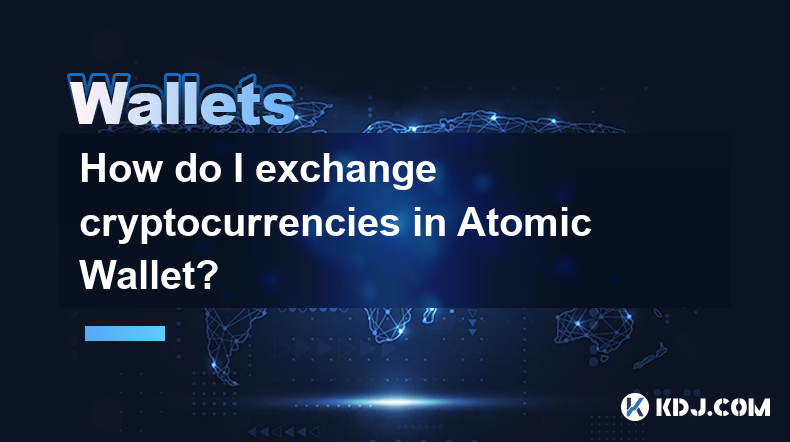
How do I exchange cryptocurrencies in Atomic Wallet?
Mar 27,2025 at 12:14pm
Understanding Atomic Wallet's Exchange FeatureAtomic Wallet offers a built-in exchange service, allowing users to swap one cryptocurrency for another directly within the wallet. This eliminates the need for external exchanges, streamlining the process and potentially enhancing security. However, it's crucial to understand that the exchange rates offere...
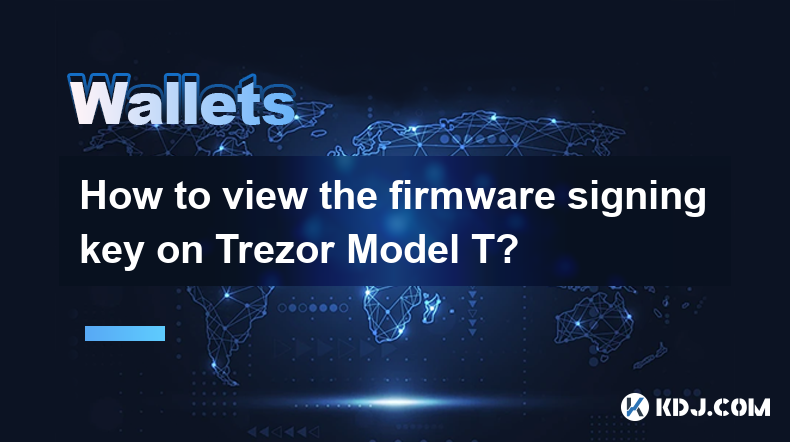
How to view the firmware signing key on Trezor Model T?
Mar 27,2025 at 12:35pm
Trezor Model T, a popular hardware wallet, prioritizes security. Understanding its firmware signing key is crucial for verifying the authenticity of your device's software. However, directly viewing this key isn't possible due to its inherent security design. The key isn't stored in a readily accessible location on the device itself. Instead, verificat...
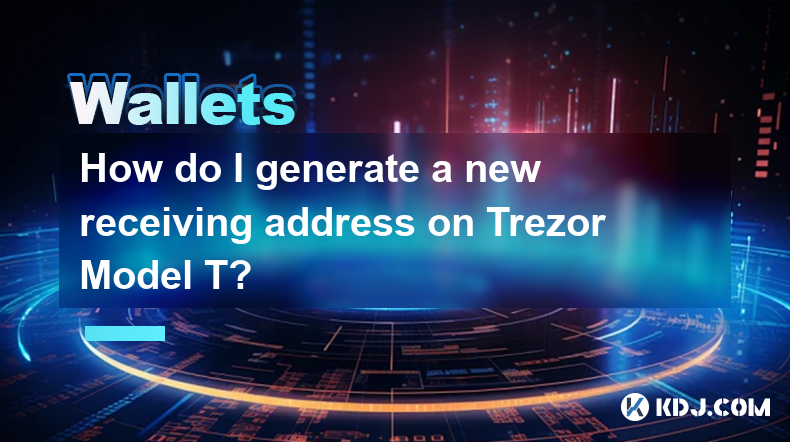
How do I generate a new receiving address on Trezor Model T?
Mar 27,2025 at 10:50am
Generating New Receiving Addresses on Your Trezor Model TThe Trezor Model T, a popular hardware wallet, prioritizes security by allowing users to generate fresh receiving addresses for each transaction. This enhances privacy and minimizes the risk of funds being compromised. This process is straightforward but requires careful attention to detail. Firs...
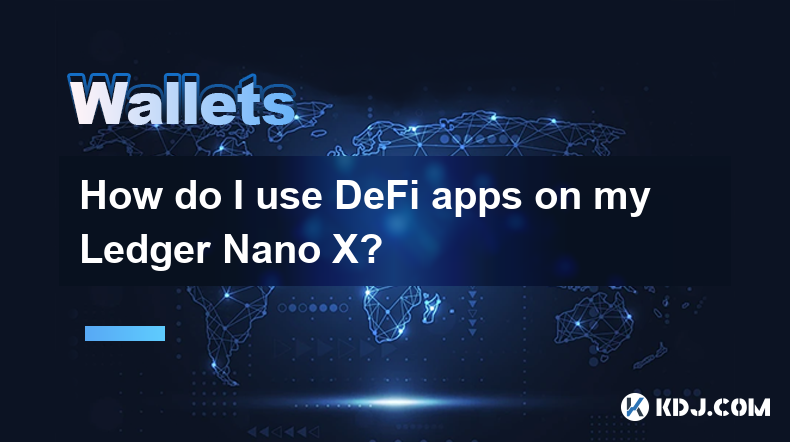
How do I use DeFi apps on my Ledger Nano X?
Mar 27,2025 at 09:36am
Connecting Your Ledger Nano X to DeFi ApplicationsUsing decentralized finance (DeFi) applications with your Ledger Nano X requires understanding that the Ledger device itself doesn't directly interact with DeFi platforms. Instead, it acts as a secure hardware wallet, safeguarding your private keys. You'll need to use a compatible software wallet or bri...
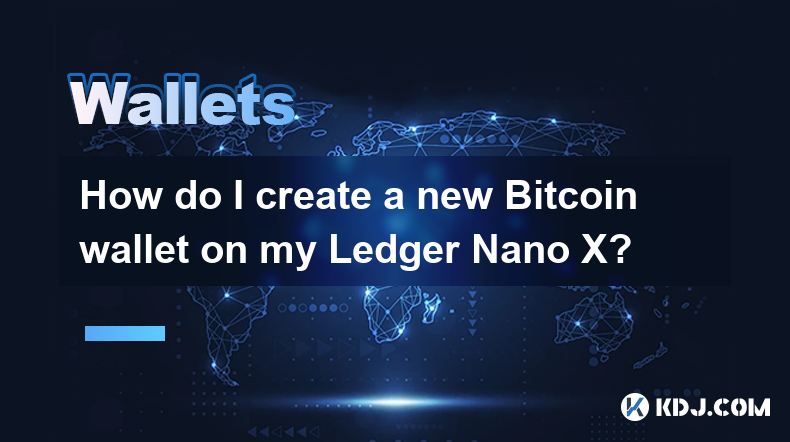
How do I create a new Bitcoin wallet on my Ledger Nano X?
Mar 27,2025 at 12:28pm
Setting Up a Bitcoin Wallet on Your Ledger Nano XThe Ledger Nano X is a hardware wallet offering enhanced security for managing cryptocurrencies, including Bitcoin. Creating a new Bitcoin wallet involves several straightforward steps. Remember, your Ledger device is the key to your security; treat its passphrase with utmost care. Never share it with an...
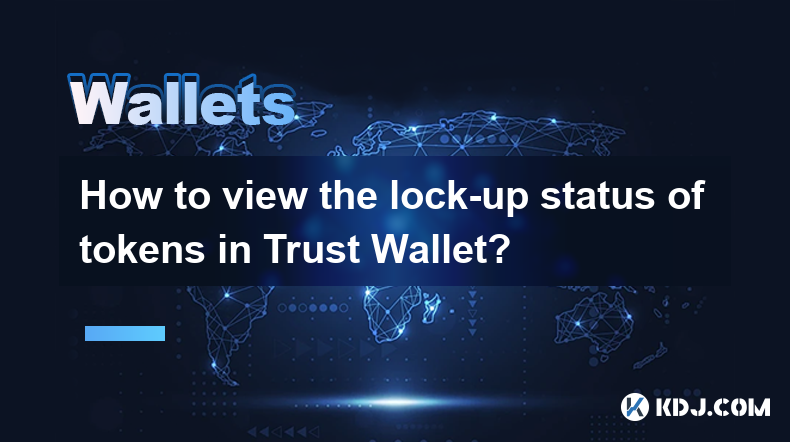
How to view the lock-up status of tokens in Trust Wallet?
Mar 27,2025 at 07:57am
Understanding Token Lock-UpsMany cryptocurrency projects utilize token lock-ups as a mechanism to incentivize long-term investment and prevent early dumping that could negatively impact the token's price. These lock-ups restrict the transferability of tokens for a predetermined period. Understanding your token's lock-up status within Trust Wallet is cr...

How do I exchange cryptocurrencies in Atomic Wallet?
Mar 27,2025 at 12:14pm
Understanding Atomic Wallet's Exchange FeatureAtomic Wallet offers a built-in exchange service, allowing users to swap one cryptocurrency for another directly within the wallet. This eliminates the need for external exchanges, streamlining the process and potentially enhancing security. However, it's crucial to understand that the exchange rates offere...

How to view the firmware signing key on Trezor Model T?
Mar 27,2025 at 12:35pm
Trezor Model T, a popular hardware wallet, prioritizes security. Understanding its firmware signing key is crucial for verifying the authenticity of your device's software. However, directly viewing this key isn't possible due to its inherent security design. The key isn't stored in a readily accessible location on the device itself. Instead, verificat...

How do I generate a new receiving address on Trezor Model T?
Mar 27,2025 at 10:50am
Generating New Receiving Addresses on Your Trezor Model TThe Trezor Model T, a popular hardware wallet, prioritizes security by allowing users to generate fresh receiving addresses for each transaction. This enhances privacy and minimizes the risk of funds being compromised. This process is straightforward but requires careful attention to detail. Firs...

How do I use DeFi apps on my Ledger Nano X?
Mar 27,2025 at 09:36am
Connecting Your Ledger Nano X to DeFi ApplicationsUsing decentralized finance (DeFi) applications with your Ledger Nano X requires understanding that the Ledger device itself doesn't directly interact with DeFi platforms. Instead, it acts as a secure hardware wallet, safeguarding your private keys. You'll need to use a compatible software wallet or bri...

How do I create a new Bitcoin wallet on my Ledger Nano X?
Mar 27,2025 at 12:28pm
Setting Up a Bitcoin Wallet on Your Ledger Nano XThe Ledger Nano X is a hardware wallet offering enhanced security for managing cryptocurrencies, including Bitcoin. Creating a new Bitcoin wallet involves several straightforward steps. Remember, your Ledger device is the key to your security; treat its passphrase with utmost care. Never share it with an...

How to view the lock-up status of tokens in Trust Wallet?
Mar 27,2025 at 07:57am
Understanding Token Lock-UpsMany cryptocurrency projects utilize token lock-ups as a mechanism to incentivize long-term investment and prevent early dumping that could negatively impact the token's price. These lock-ups restrict the transferability of tokens for a predetermined period. Understanding your token's lock-up status within Trust Wallet is cr...
See all articles

























































